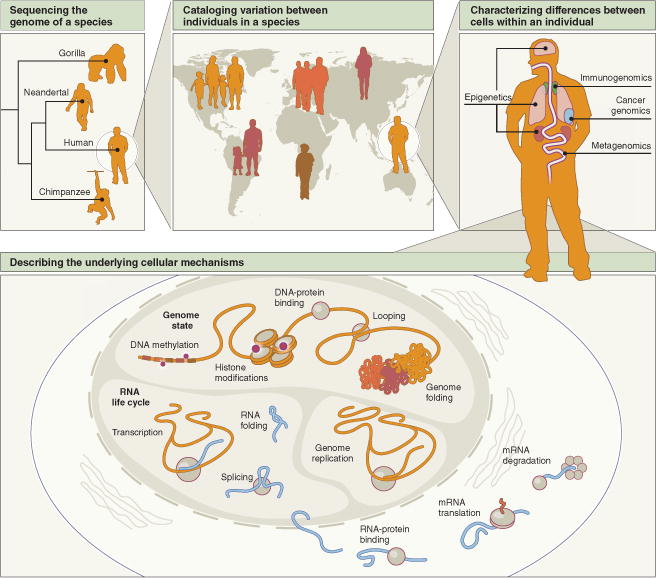Figure 1.

Where we are headed: a road map of sequencing science. The earliest sequencing projects focused on creating ‘reference’ genomes for individual species of interest. With new technologies, such projects can now be taken on for entire taxa, even when some of their members are extinct (top left). Next-generation sequencing is also enabling the study of biological systems at ever-finer scales. For example, we can explore genetic variation between individual members of a single species (top center), and the genetic and epigenetic differences between the cells of a single individual (top right). Sequencing can also provide a window into diverse processes in cells, including all of the phenomena shown (bottom).
